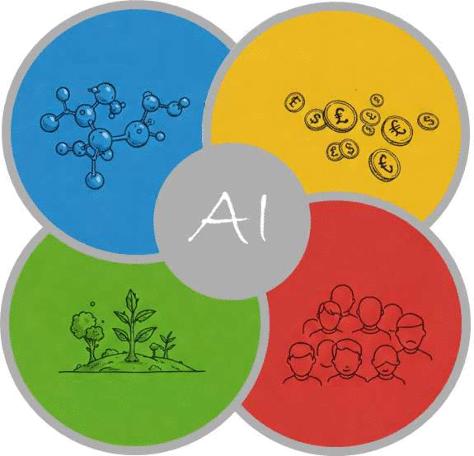材料“经济经济学”:利用机器学习结合化学、金融、环境和社会因素
IF 16
1区 材料科学
Q1 CHEMISTRY, MULTIDISCIPLINARY
引用次数: 0
摘要
本展望讨论了先进的机器学习技术的应用,以探索电化学性能与现代纳米材料的环境和社会经济影响之间的潜在关系,这对碳中和和可持续的未来至关重要。通过使用最先进的算法,其目的是使导致纳米材料研究和开发应用(例如电池)的不透明因素的汇合变得透明,而在很大程度上忽视了生态和社会后果。我们展示了可解释的机器学习如何揭示隐藏的模式,从而为更理性、更全面、更可持续的决策提供信息。通过提出一个案例研究来探索公开可用的电池化合物数据集中的关系,我们提出了一个框架,扩展了现有的方法,如生命周期分析和临界评估。这一框架通过纳入越来越全面的因素扩大了纳米材料理解的范围,同时也增强了可扩展性和解释能力。最终,使用这种方法,从业者将能够识别和分析阻碍可再生能源转型的基本障碍,从而为可持续纳米材料研究和开发的未来做出贡献。本文章由计算机程序翻译,如有差异,请以英文原文为准。

Materials “Economatics”: Combining Chemical, Financial, Environmental, and Social Factors Using Machine Learning
This Perspective discusses the application of advanced machine learning techniques to explore the latent relationships between the electrochemical performance and the environmental and socioeconomic impacts of modern nanomaterials fundamental to a carbon-neutral and sustainable future. Through the use of state-of-the-art algorithms, the aim is to make transparent the confluence of opaque factors that have resulted in the applications of nanomaterial research and development, for example, batteries, largely overlooking ecological and social consequences. We demonstrate how interpretable machine learning could uncover hidden patterns that inform more rational, holistic, and thus sustainable decision-making. By presenting a case study to explore relationships within a publicly available battery compound data set, we propose a framework that expands on existing methods, such as life cycle analysis and criticality assessments. This framework broadens the scope of nanomaterial understanding by incorporating increasingly holistic factors, while also enhancing scalability and explanatory capacity. Ultimately, using this approach, practitioners will be able to identify and analyze the fundamental barriers that are hindering the renewable energy transition, thus contributing to the future of sustainable nanomaterial research and development.
求助全文
通过发布文献求助,成功后即可免费获取论文全文。
去求助
来源期刊

ACS Nano
工程技术-材料科学:综合
CiteScore
26.00
自引率
4.10%
发文量
1627
审稿时长
1.7 months
期刊介绍:
ACS Nano, published monthly, serves as an international forum for comprehensive articles on nanoscience and nanotechnology research at the intersections of chemistry, biology, materials science, physics, and engineering. The journal fosters communication among scientists in these communities, facilitating collaboration, new research opportunities, and advancements through discoveries. ACS Nano covers synthesis, assembly, characterization, theory, and simulation of nanostructures, nanobiotechnology, nanofabrication, methods and tools for nanoscience and nanotechnology, and self- and directed-assembly. Alongside original research articles, it offers thorough reviews, perspectives on cutting-edge research, and discussions envisioning the future of nanoscience and nanotechnology.
 求助内容:
求助内容: 应助结果提醒方式:
应助结果提醒方式:


